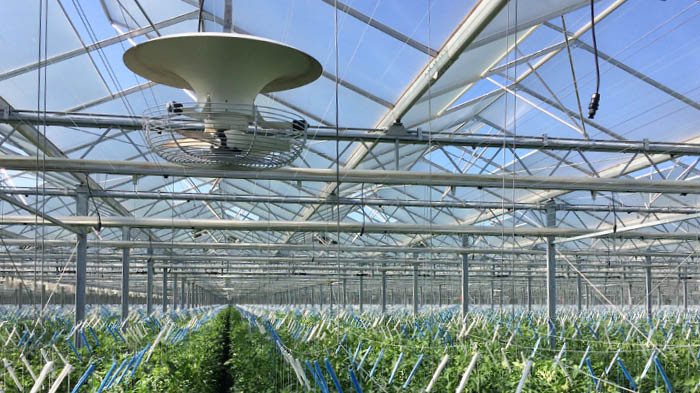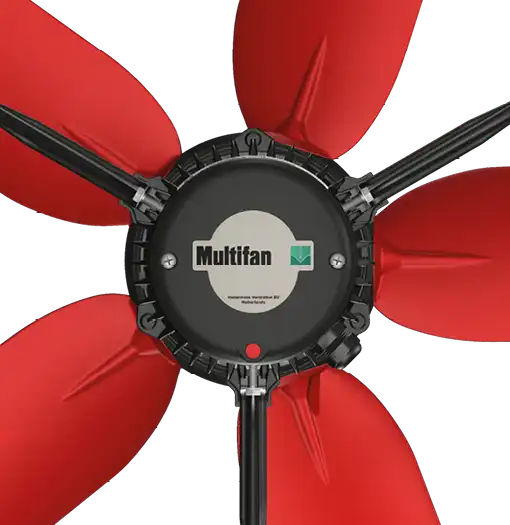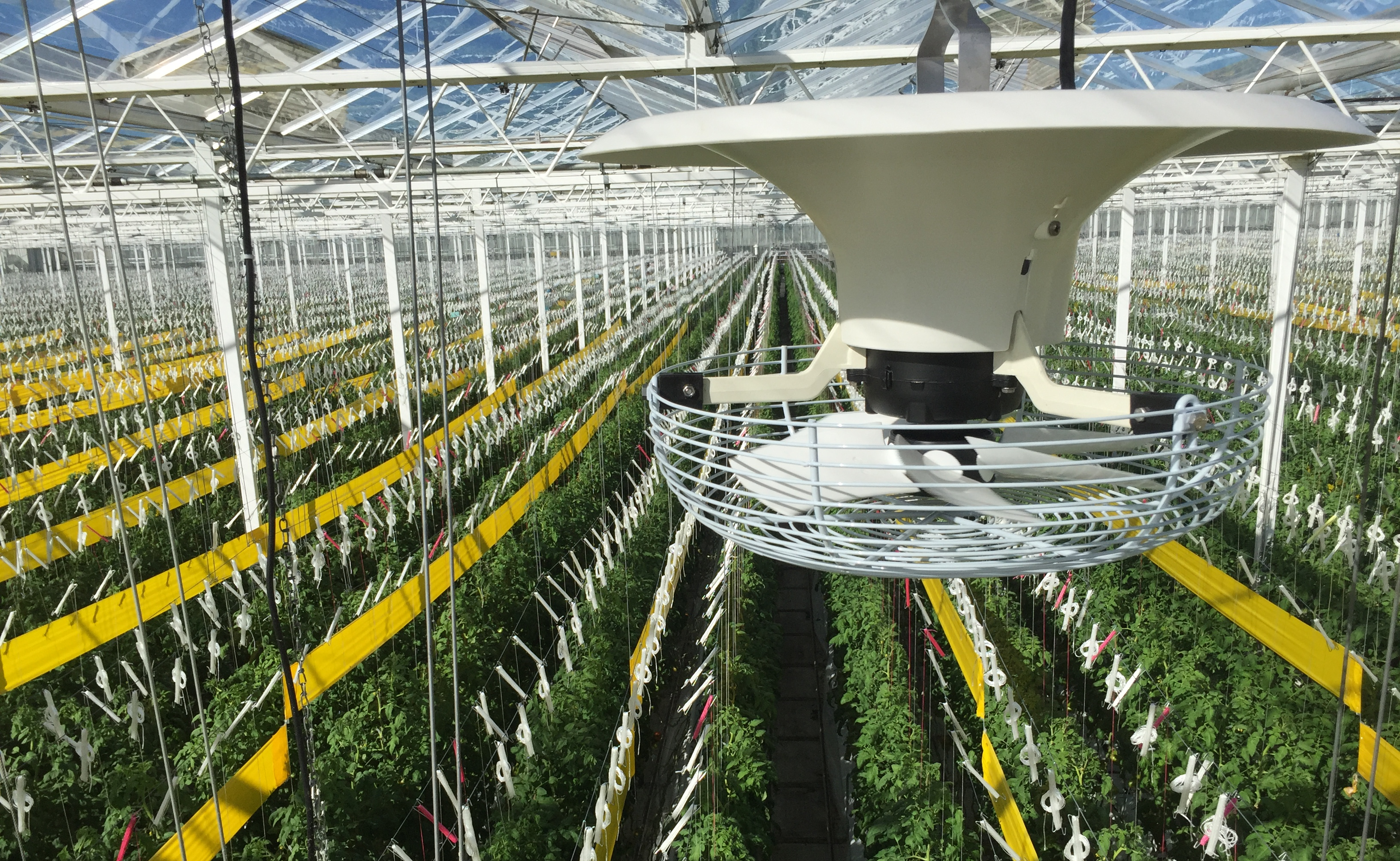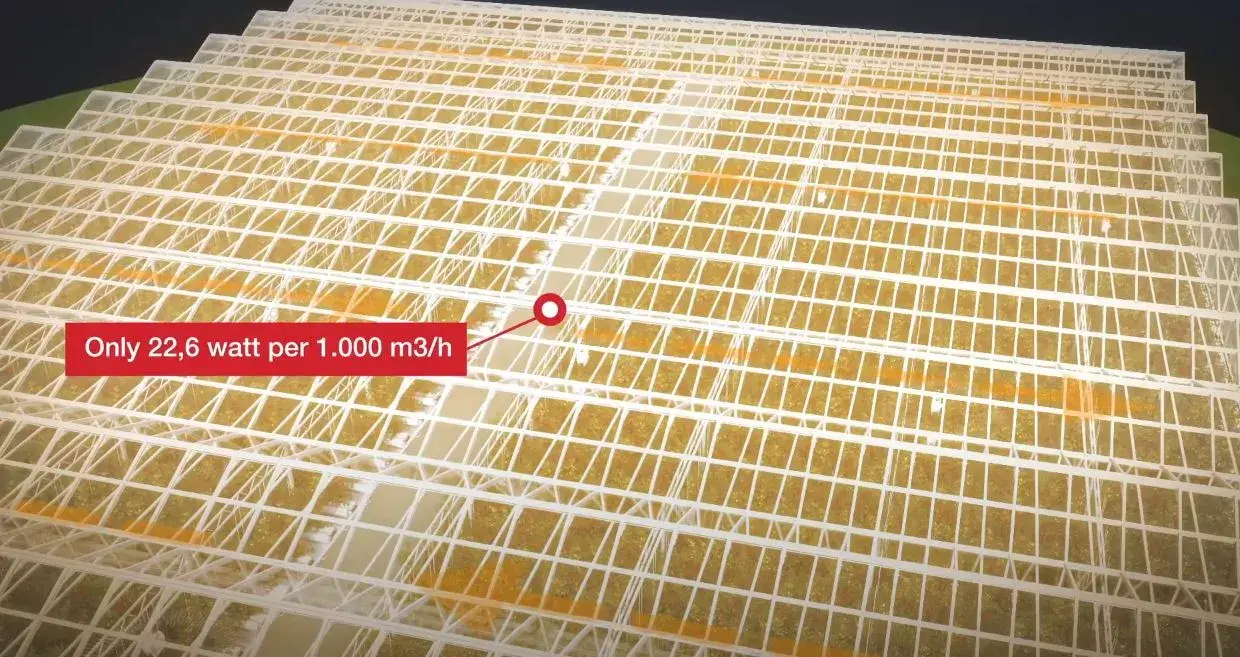A crucial part of active climate control in horticultural greenhouses is the correct circulation or ventilation and fan choice, based on your specific situation. So, what types of ventilation are there for greenhouses? We cover the different methods in this article.
Horizontal circulation of air
In horizontal circulation, powerful fans blow air above the crop at a high speed. This mixes the air over a large distance. This method is therefore ideal for large greenhouses with large differences in temperature and humidity. In practice, there are 2 types of methods to which horizontal circulation fans are applied:
Parallel ventilation
With parallel ventilation, the fans hang side by side in the greenhouse. From the center aisle, the air above the plants is blown to the side of the greenhouse. The air collides with the side wall and bends downwards. At the root level, the air then flows back to the aisle. This creates a large loop. Usually this system is used with high crops where the fans blow through the crop. This method is rarely used today.
Series ventilation
Series ventilation is the most common and is often used for low planting. With this system, the fans are placed in extension of each other throughout the greenhouse like a loop. One fan takes over the air flow from the other unit and moves it further. This creates good air circulation above the crop.
Solution for horizontal circulation: Horizontal Circulation Fan
Vertical circulation of air
With vertical circulation, air is sucked in from below and spread over the crop like a blanket. The air mainly passes through the crop, creating a uniform temperature and humidity. Local vertical air movement achieves, among other things, (Wageningen University, July 2012, P.A. van Weel, J.O. Voogt):
Solution for vertical circulation: V-FloFan
- That no temperature differences caused by cooling along the screen or by heating via lamps, as a result of air flows along the greenhouse cover over large distances
- That the air movement penetrates better into rising crops
- That the air movement actually provides an active microclimate around the plant
- That an even movement is created over a larger surface
- That heat from the sun or from lamps is effectively transported downwards
- That movement without pressure build-up means that much less energy is required for a certain air displacement in m3/m2/hr.
- That any local disruptions have much less influence on the rest of the greenhouse
- That due to a suitable distribution with sufficient overlap between the fans, in addition to a vertical temperature equalization, there is also a small horizontal equalization
Air circulation with the help of poly air tubes
Poly air tubes can be hung under the plant gutter. By inflating a poly air tube with the help of a fan, air flow is created around the roots of the plant through the holes in the tube. This is an effective way of creating a microclimate at root level in a very focused way.
Air ventilation in a greenhouse
In addition to circulating air, in areas of the world with warmer climates, fans are often used to actively exchange the greenhouse air. The reason for this is that in warm areas one will often use pad cooling or nozzle cooling to cool the greenhouse air. By evaporating water, you lower air temperature but increase humidity. Using fans, the humid greenhouse air is then exhausted to the outside and dry outside air is drawn in.
Combination of air circulation and ventilation
In greenhouses where ventilation is applied, a circulation system is often installed as well. Whenever ventilation is not desirable, the circulation fans ensure that the air in the greenhouse stays in motion. In practice, you sometimes find that ventilation and circulation systems are switched on simultaneously. If the fans blow in the direction of the air flow of the ventilation fans, the air flow is further amplified. This doesn’t necessarily need to be a problem. If the horizontal circulation fans blow against the wind direction of the ventilation fans, air resistance is created. This will consume
unnecessary amounts of energy. Vertical circulation fans should never be used
simultaneously with ventilation fans. Based on the above information, a choice can be made for circulation or ventilation, and the type of circulation system.




